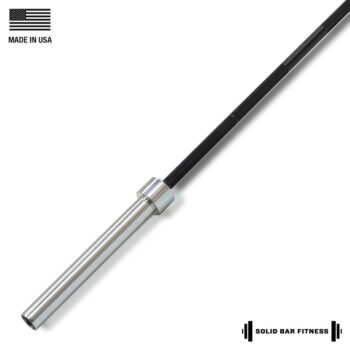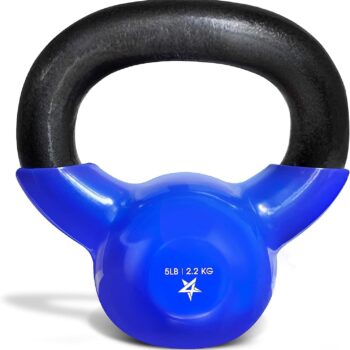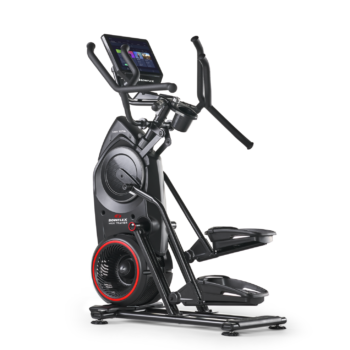Understanding the Essence of Strength Training
Strength training offers a wide range of benefits, including increased muscle mass, improved metabolism, enhanced bone density, and a reduced risk of injury (ACSM, 2021). Strength training, as recommended by the Mayo Clinic (2021), is a fantastic way to transform your body, improve your health, and boost your confidence. Whether you’re a complete novice or someone who’s dabbled in fitness before, this beginner’s guide to strength training will help you navigate the world of weights and build a solid foundation for your fitness journey.
Strength training, also known as resistance training, involves lifting weights or using your body weight to build and tone muscle. It offers a wide range of benefits, including increased muscle mass, improved metabolism, enhanced bone density, and a reduced risk of injury. Furthermore, it’s not just for bodybuilders or athletes – anyone can benefit from incorporating strength training into their fitness routine.
Strength training is of fundamental importance for a multitude of reasons. Primarily, it enhances your ability to perform everyday activities with ease. Imagine lifting heavy grocery bags, moving furniture, or carrying your child—these are all functions of your muscular strength. As you engage in strength training, your muscles become stronger and more efficient, making day-to-day tasks less strenuous and more manageable.
Additionally, strength training also improves balance, coordination, and posture, which are crucial for preventing falls and maintaining an active lifestyle as we age. A substantial body is not just about looking good—it’s about being capable, independent, and competent in life’s everyday tasks. This is the true value that strength training brings to your life.
The importance of strength training is underscored by leading health institutions like Harvard Medical School (Harvard Health Publishing, 2021).
Let’s dive into the basics of strength training to help you get started on your path to a stronger, healthier you.

The Basics of Strength Training
Set Clear Goals
Before you embark on your strength training journey, it’s essential to define your goals. Knowing what you want to achieve will help you tailor your workout plan and stay motivated. Your goals are to build muscle, increase strength, improve endurance, or enhance your overall fitness.
Setting clear goals is a cornerstone of successful strength training. With a defined target in sight, you’re more likely to maintain focus, stay on course, and measure progress. Goals give your training purpose and direction. They provide a framework within which you can plan your workouts and monitor your improvement.
When you know what you want to achieve, you can design a training plan that suits your specific objectives. For instance, if your goal is to build muscle, your workouts involve heavy weights and low repetitions. On the other hand, if you aim to improve endurance, your program may feature lighter weights and higher repetitions.
Clear goals act as a powerful motivator, pushing you to persevere when things get tough. Every time you hit a milestone, no matter how small, you experience a sense of achievement that fuels your desire to push further. Thus, setting clear goals is not just a means to an end—it’s a crucial part of the strength training journey itself.
Choose the Right Equipment for Strength Training
Strength training can be done using various equipment, including dumbbells, barbells, resistance bands, and even your body weight. As a beginner, it’s a good idea to start with equipment that feels comfortable and safe for you. Many gyms offer a variety of options, so you can experiment and find what works best for your goals and preferences.
Choosing the right equipment is paramount to your strength training success. The type of equipment you use can significantly influence the effectiveness of your workouts and the speed at which you attain your goals. Dumbbells and barbells, for instance, are excellent for compound exercises that engage multiple muscle groups, thereby promoting balanced muscle growth and strength. Resistance bands, on the other hand, are great for targeting specific muscles and enhancing flexibility. Using your body weight can offer a convenient and versatile form of resistance training, which can be done anytime, anywhere. By experimenting with different types of equipment, you can discover what best suits your personal needs and preferences and devise a training plan that keeps you motivated and engaged.
Keep in mind that using suitable equipment is also crucial for safety and injury prevention. The wrong equipment or incorrect use can lead to injuries, hampering your progress and potentially causing long-term damage. Therefore, it’s important to seek guidance from fitness professionals or experienced trainers when starting out. They can help you understand how to use different equipment correctly and safely, ensuring you get the most out of your workouts while minimizing the risk of injury.
-
Bowflex Adjustable Dumbbells: SelectTech 552 with Adjustable Weights
$549.00Original price was: $549.00.$379.00Current price is: $379.00. -
Fitness Factory Kansas Power Bar
$219.00 -
Fitness Factory Best Fitness Smith Machine BFSM250
$550.00Original price was: $550.00.$435.00Current price is: $435.00. -
Marcy Dumbbell Rack Weight Stand – Premium Home Gym Storage
$79.99Original price was: $79.99.$38.70Current price is: $38.70.
Learn Proper Form
Proper form is crucial in strength training to prevent injuries and maximize results. It’s a good idea to consult with a fitness professional or watch instructional videos online to learn the correct form for different exercises. Pay close attention to your posture, breathing, and range of motion.
Learning proper form is not just a recommendation but a necessity for anyone engaging in strength training. The fundamental purpose of mastering the correct form is to ensure that the target muscles are effectively engaged during the exercise, thus maximizing the benefits of each workout. Moreover, proper form reduces the risk of injury by ensuring that exercises are performed in a controlled, safe manner.
When executing strength training exercises, it’s easy to unintentionally shift the strain onto the wrong muscles, which can lead to imbalances, strains, and injuries over time. Proper form prevents this, ensuring that the intensity of the exercise is directed where it should be. It also enhances efficiency. With proper form, every lift, squat, or press is performed to its fullest potential, bringing you closer to your fitness goals with each workout.
Another crucial aspect of proper form is its role in improving body mechanics, including balance and coordination. This not only contributes to better performance in strength training but also facilitates day-to-day movements, making you less prone to falls and injuries.
In summary, understanding and maintaining proper form is integral to safe and effective strength training. To ensure safe and effective strength training, it’s essential to master proper form, as highlighted by the American Council on Exercise (ACE, 2021). It allows for optimal muscle engagement, reduces the risk of injury, and aids in the development of better body mechanics. It ensures that your strength training journey is not only successful but also sustainable in the long run.
Start with Compound Exercises
Compound exercises are multi-joint movements that engage multiple muscle groups simultaneously. They are excellent for building overall strength and muscle mass. Some common compound exercises include squats, deadlifts, bench presses, and pull-ups. As a beginner, focus on mastering these foundational movements before incorporating isolation exercises.
Starting with compound exercises is crucial in strength training, particularly for beginners, as these exercises offer the most bang for your buck. Compound exercises stimulate multiple muscle groups at once, leading to significant strength gains and efficient workouts. The activation of multiple joints and muscles not only enhances muscular coordination and balance but also burns more calories due to the greater energy expenditure involved.
Compound exercises mimic real-world physical activities, such as lifting, pulling, and pushing. This functional aspect of compound exercises improves daily life performance, making everyday tasks easier. Bench presses, for instance, strengthen the chest, shoulders, and triceps – all vital for pushing movements. Squats, on the other hand, target your thighs, hips, and buttocks, muscles that are integral to our daily movements such as sitting and standing.
Incorporating compound exercises early on in your strength training journey lays a solid foundation for future fitness progress. By building overall strength and muscle mass, compound exercises prepare your body for more advanced, isolated exercises down the line. They allow you to build a strong, well-rounded physique and ensure balanced muscle development, reducing the risk of injury. Therefore, beginners are often advised to start with compound exercises as they form the cornerstone of any effective strength training regimen.
Create a Well-Rounded Strength Training Routine
Creating a well-rounded strength training routine is the cornerstone of a successful and effective fitness regimen. Such a routine should encompass a holistic approach to muscle development, ensuring that all major muscle groups receive adequate attention and stimulation. Targeting major muscle groups, as recommended by the National Institute on Aging (NIA, 2021), is crucial for maintaining balance and functionality as you age.
-
Comprehensive Muscle Development: A well-rounded strength training routine systematically targets various muscle groups throughout your body. This includes the chest, back, legs, shoulders, arms (biceps and triceps), and core. Each of these muscle groups plays a unique role in your overall strength and functionality. Neglecting any of them can lead to imbalances, which not only hinder your progress but also increase the risk of injury.
-
Proportional Physique: Engaging all major muscle groups promotes proportional muscle development. This means that as you gain strength and muscle mass,your body maintains a balanced and symmetrical appearance. This balanced development not only contributes to a more aesthetically pleasing physique but also enhances your overall physical performance.
-
Injury Prevention: Focusing on specific muscle groups while neglecting others can lead to muscular imbalances. These imbalances can strain joints, cause poor posture, and increase the risk of injuries during both workouts and daily activities. A well-rounded routine helps mitigate these risks by ensuring that all muscles work together harmoniously.
-
Enhanced Functionality: Strength training is not just about looking good; it’s about being able to perform everyday tasks with ease. By targeting all major muscle groups, you improve your functional strength, making it easier to lift, carry, bend, and move in your daily life. This increased functionality leads to a higher quality of life and greater independence as you age.
-
Optimized Strength: A diverse strength training routine helps maximize your overall strength. Different muscle groups work together to support each other during compound movements and activities. Strengthening all these muscle groups collectively boosts your overall physical power and endurance.
-
Motivation and Commitment: Variety is essential for long-term commitment to a fitness program. A well-rounded routine keeps your workouts exciting and challenging, preventing monotony and boredom. This variety can increase your motivation and make it easier to stick with your strength training program over time.
-
Rest and Recovery: Distributing your workouts throughout the week and including rest days is vital for muscle recovery and growth. By allowing each muscle group time to recover, you reduce the risk of overuse injuries and optimize the effectiveness of your training.
To sum it up, a well-rounded strength training routine that targets all major muscle groups is essential for achieving balanced muscle development, preventing injuries, improving functionality, and maintaining long-term commitment to your fitness goals. It’s a key component of a successful and sustainable strength training program, ensuring that you not only look strong but also become functionally strong in your everyday life.
Gradually Increase Intensity
To see progress in your strength and muscle gains, you’ll need to increase the intensity of your workouts gradually. This can be achieved by adding more weight, increasing the number of repetitions, or reducing rest intervals between sets. However, remember to progress at a pace that suits your fitness level and allows for proper recovery.
A gradual increase in workout intensity is a key factor in the progression and effectiveness of a strength training regimen. This principle, often referred to as progressive overload, is essential for stimulating muscle growth and enhancing strength. As your body adapts to the demands of your current workout, the only way to continue making gains is to increase the challenge or “overload” the muscles. This can be accomplished by increasing the weight lifted, adding more repetitions, or reducing rest intervals between sets.
The importance of progressive overload can’t be overstated. It forces your muscles to work harder than they’re accustomed to, causing them to adapt and grow stronger over time. By consistently challenging your muscles, you not only increase your strength and muscle mass but also improve your endurance and boost your metabolic rate
However, it’s crucial to remember that the increase in intensity should be gradual and sustainable. Too much too soon can lead to overtraining and increase the risk of injury. It’s recommended to increase the intensity when you can comfortably perform your current workout, ensuring that proper form is maintained throughout. Thus, gradually increasing workout intensity forms a fundamental part of an effective and safe strength training routine.
Include Cardiovascular Exercise
While strength training is excellent for building muscle and strength, it’s essential to incorporate cardiovascular exercise into your routine as well. Cardio workouts, such as running, cycling, or swimming, help improve endurance and support overall cardiovascular health.
Including cardiovascular exercise in a strength training routine offers a host of benefits that contribute significantly to overall fitness and health. Firstly, cardiovascular workouts strengthen the heart and lungs, improve the efficiency of oxygen distribution throughout the body, and enhance endurance and stamina. This enhanced endurance can be particularly beneficial to strength training, allowing you to perform more repetitions and sustain longer workout sessions, thereby leading to better strength gains.
Cardiovascular workouts also aid in maintaining a healthy body weight. They burn a considerable amount of calories, supporting weight loss and helping in the maintenance of lean muscle mass. In the context of strength training, this is crucial as excessive body fat can impede muscular visibility and affect the overall physique.
Moreover, cardiovascular exercises promote faster recovery. They boost blood circulation, enabling efficient nutrient delivery to the muscles and quicker elimination of waste products. This improvement in recovery can accelerate muscle repair post-strength training, facilitating faster muscle growth and reducing downtime between workouts.
Lastly, incorporating cardiovascular workouts can help diversify a strength training routine, making it more exciting and enjoyable. This variety can boost motivation, enhance adherence to the training program, and ultimately drive more significant progress. Hence, cardiovascular exercise is not just a companion to strength training but a vital component of a balanced and effective fitness regimen.
-
Fitness Factory Octane Surge Indoor Cycle
$2,799.00Original price was: $2,799.00.$2,499.00Current price is: $2,499.00. -
KingSmith Foldable Walking Pad: Ultra Slim Home Gym Treadmill
$369.00Original price was: $369.00.$321.03Current price is: $321.03. -
Fitness Factory Spirit CR900ENT Recumbent Bike
$6,899.00Original price was: $6,899.00.$5,899.00Current price is: $5,899.00. -
Fitness Factory XTERRA MBX2500 Indoor Cycle
$899.00Original price was: $899.00.$649.00Current price is: $649.00. -
Echelon EX-3 Smart Bike
$472.80
Prioritize Recovery
Rest and recovery are integral parts of any strength training program. Your muscles need time to repair and grow stronger after each workout. Ensure you get enough sleep, stay hydrated, and consider incorporating stretching or yoga to improve flexibility and reduce the risk of injury.
Prioritizing recovery is a critical component of any strength training regimen. It is during the recovery phase that the body repairs the minor tissue damage incurred during workouts, allowing muscles to grow stronger and larger in response to training. Without adequate recovery, not only are these strength gains compromised, but there is also an increased risk of overuse injuries and burnout.
Recovery periods allow the muscles to replenish their energy stores and repair tissue damage, which are crucial for muscle growth and strength enhancement. When we strength train, we create micro-tears in our muscle fibers. The body repairs these tears during rest periods, building them back stronger and larger – a process known as muscle hypertrophy. Hence, without sufficient recovery, the muscle-building process can be hampered, limiting strength gains.
Recovery can help prevent overtraining – a state of persistent fatigue and underperformance resulting from insufficient rest. Overtraining can negatively impact strength progression, compromise immune function, and increase injury risk. By prioritizing recovery, we can avoid these setbacks and ensure that our physical performance and health remain optimal.
Recovery practices such as adequate hydration, nutrition, and sleep support overall physical health and well-being. Proper hydration and nutrition replenish lost fluids and nutrients, facilitating muscle repair and energy restoration. Quality sleep, on the other hand, plays a pivotal role in the body’s recovery process, regulating the hormones responsible for muscle growth and repair.
Essentially, prioritizing recovery is integral to maximizing the benefits of a strength training routine. It ensures that the body gets the rest and repair it needs to grow stronger, maintains physical health, and prevents overtraining, paving the way for sustained progress in strength training.
Maintain a Balanced Diet
Nutrition plays a significant role in your strength training journey. Consume a balanced diet that includes an adequate amount of protein to support muscle repair and growth. Stay hydrated, eat plenty of fruits and vegetables, and consider consulting with a registered dietitian for personalized guidance.
Maintaining a balanced diet is pivotal in supporting strength training efforts and facilitating muscle growth and recovery. An appropriately balanced diet offers the essential nutrients required for muscle repair, energy production, and overall health maintenance.
Firstly, protein intake is crucial as it provides the building blocks – amino acids – that the body uses to repair and build muscle tissues. Consuming an adequate amount of protein post-workout can significantly enhance muscle recovery and growth, contributing to strength gains.
In addition, carbohydrates play an indispensable role, as they act as the body’s primary energy source. Consuming carbohydrates helps replenish the body’s glycogen reserves, which are heavily used during strength training. This, in turn, enhances workout performance and endurance, allowing for more intense and effective training sessions.
Fats, specifically healthy fats, are also important as they provide long-term energy reserves, support hormone production, and aid in nutrient absorption. Consuming healthy fats can thus support overall health and strength training performance.
Furthermore, vitamins and minerals obtained from fruits and vegetables support various bodily functions, including those involved in muscle contraction, oxygen transport, and energy production. They also aid in immune support and inflammation control, crucial for recovery and consistent training.
Finally, staying hydrated is vital as it aids in nutrient transport, muscle function, and temperature regulation. Dehydration can lead to a decline in performance, hindering training intensity and progress.
In essence, a balanced diet works synergistically with strength training, providing the necessary fuel and resources for effective workouts and optimal recovery. It is a non-negotiable component of a successful strength training regimen.
Stay Consistent and Patient
Consistency is key in strength training. Results may not appear overnight, but with dedication and patience, you will see progress. Track your workouts and celebrate your achievements along the way to stay motivated.
Staying consistent and patient is fundamental in any strength training routine. The process of developing strength and building muscle is a gradual one, governed by the body’s natural pace of adaptation. Consistency is critical because it is through repeated and progressive overload of the muscles over time that strength and muscular hypertrophy occur. By sticking to a regular exercise schedule, maintaining consistent form and intensity in your workouts, and progressively increasing your load or volume, you facilitate a continuous stimulus that pushes your muscles to adapt and grow stronger.
Patience, on the other hand, is equally important. Significant changes in strength and muscle size do not happen instantly; they are the result of accumulated effort over weeks, months, and even years of consistent training. It may be tempting to expect quick results, but understanding the biological timeline of muscle adaptation and growth can help set realistic expectations and prevent undue frustration or demotivation.
Consistency sets the stage for progressive muscular development, while patience allows you to mentally endure the journey, appreciating smaller increments of progress and staying committed despite the long timeline. Together, they form a powerful mindset that can significantly contribute to success in strength training.
Strength training is a fantastic way to transform your body, improve your health, and boost your confidence. As a beginner, focus on setting clear goals, learning proper form, and creating a well-rounded workout routine that targets all major muscle groups. Stay consistent, prioritize recovery, and fuel your body with the right nutrients. With time and dedication, you’ll build a strong foundation and achieve the results you desire. Remember, the journey to a stronger, healthier you starts with that first step into the weight room or home gym.
Before beginning any new strength training program, it is imperative to consult with a qualified healthcare professional or physician. Your health and well-being are of paramount importance, and individual circumstances may vary. A healthcare professional can assess your unique medical history, physical condition, and potential limitations to ensure that the chosen fitness regimen is safe and appropriate for you. Their expert guidance will help you make informed decisions regarding your fitness journey, minimize the risk of injury, and optimize your overall health outcomes. Always prioritize your safety and consult with a healthcare professional before starting any new exercise routine or fitness plan.
Home Gym Essentials for Strength Training
-
Finer Form Home Gym Weight Bench
$299.99Original price was: $299.99.$179.99Current price is: $179.99. -
Fitness Factory Best Fitness Smith Machine BFSM250
$550.00Original price was: $550.00.$435.00Current price is: $435.00. -
Yes4All Kettlebell
$12.99Original price was: $12.99.$11.09Current price is: $11.09. -
Apple iPad (9th Generation)
$329.00Original price was: $329.00.$249.00Current price is: $249.00. -
Fitness Factory EXM1 Home Gym with Leg Press built by Body-Solid
$2,195.00Original price was: $2,195.00.$995.00Current price is: $995.00. -
Fitness Factory Body-Solid Dual Ab and Back Machine
$795.00Original price was: $795.00.$625.00Current price is: $625.00. -
Body-Solid 7 ft Olympic Barbell (Black)
$149.00Original price was: $149.00.$129.00Current price is: $129.00.































